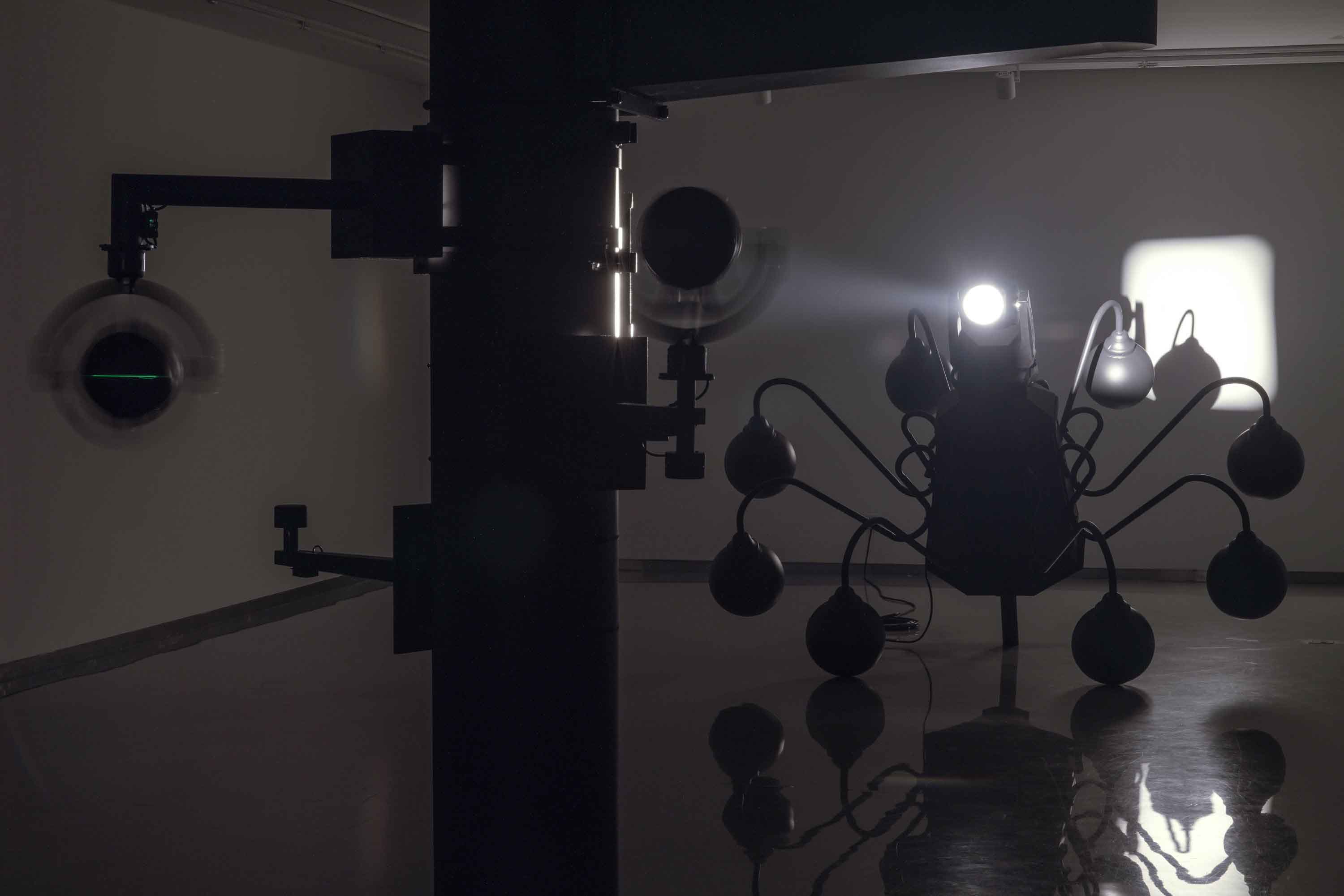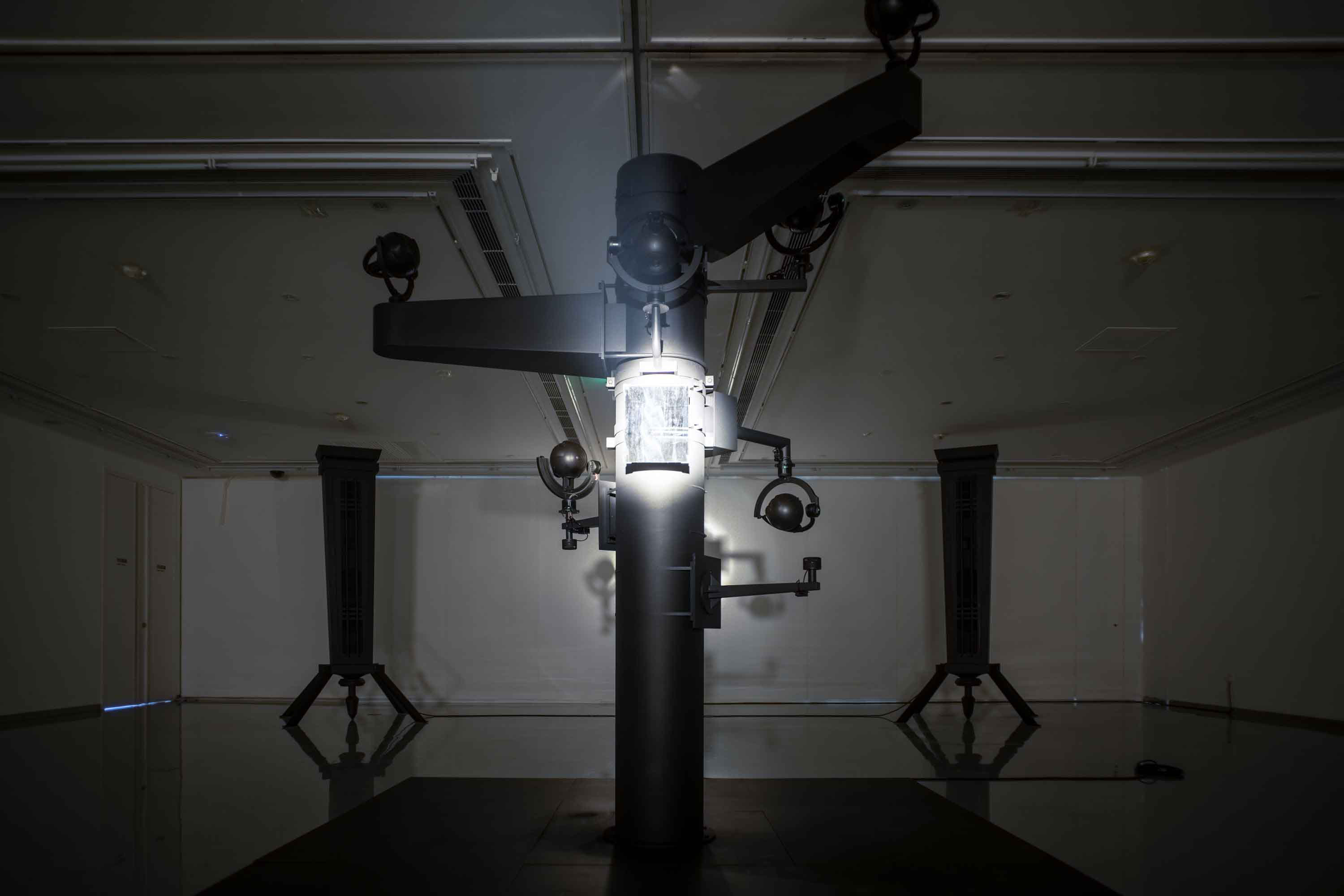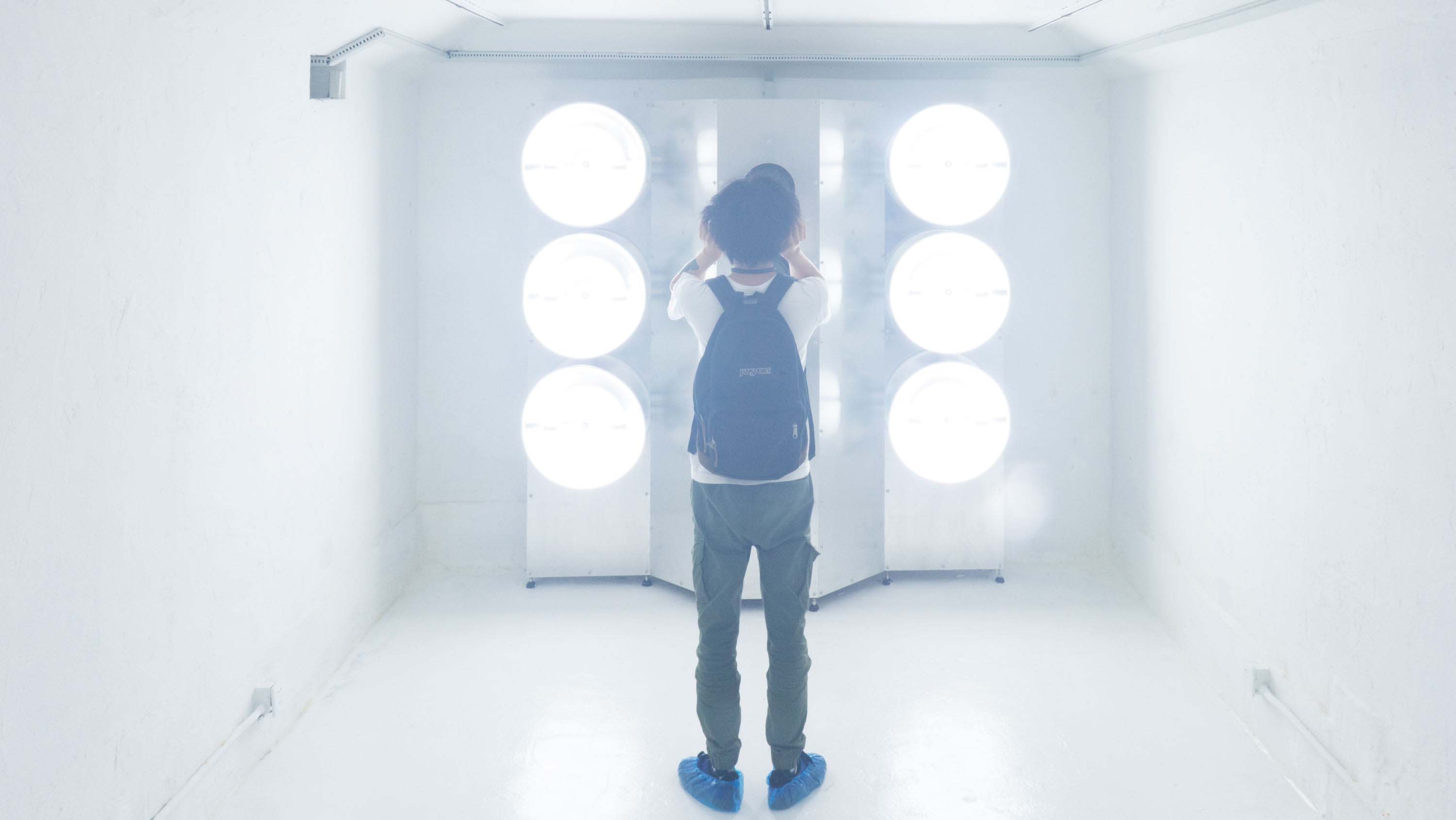SAFE HOUSE
Solo Exhibition
4th August - 4th September 2018
Zhang Ding’s solo exhibition SAFE HOUSE is simultaneously presented in the Bunker, the Wyoming Project and the KWM artcenter during 4th August - 4th September 2018. In this three spaces, his latest works constitute a discussion which explores the core of the same concept in three differentiated sites and dimensions.
SAFE HOUSE #1
Mechanical-kinetic Installation, Lighting Installation, Sound Installation
Powder coating iron plate, powder coating stainless steel, birch board, ABS plastic, 3D printing photosensitive resin, motor, computer, radar, speaker, amplifier, frequency divider, beam light, mirror, wireless receiver, acrylic, wire, screw, flash disk, program, stereo sound
A beam of light in the dim space, six eyeballs that track movements, and a black hypnotic prelude. Is it all it takes to hypnotise you?!
KWM artcenter: 201 East Tower, World Financial Center, No.1 Dongsanhuan Zhonglu, Chaoyang District, Beijing
SAFE HOUSE #2
Mechanical-kinetic Installation
Powder coating iron plate, square tube, paint, servo motor, reducer, bearing, bearing housing, gear, controller cabinet, wire, sunglasses, stainless steel door handle, screw
A black mobile cube with sunglasses - is it a safe? a man in black? Da hell you lookin' at? Da hell you lookin' at? Da hell you lookin' at.......
Wyoming Project: 12 Hou Yong Kang Hutong, Dongcheng District, Beijing
SAFE HOUSE #3
Audiovisual Installation
Aluminum plate, aluminum profile, birch board, speakers, power amplifier, frequency divider, LF electrodeless lamp, wire, screw, flash disk, 5-channel sound
Five rooms filled with five audio-visual installations, a white spatial symphony of five parts that goes on for an hour. Please wear sunglasses, intense lights!!
The Bunker: 3 Zhang Zizhong Road, Dong Cheng District, Beijing
The Hollow Men
LB
What does a place like this mean to you?
The significant and urgent historical and social responsibilities aside, here we are given an anxious security. Nail biters.
A normal but scarce sense of security comes from self-control, from the freedom of not being controlled, monitored or invaded, from the conspiracy of a prison made by and for oneself, and negative freedom - in many cases, the sole aim of isolating oneself from the outer world is a sense of security, yet the simple and even trivial notion of security pushes us out from ourselves, in relation to the world. That is to say, is absolute seclusion is possible at all, who needs a sense of security?
Formed in a normal, universal, constitutive right is a property, something like a house, that is first of all internalised as a property of our own, when those in the space become a natural extension of the space (cracking up are Descartes, Lefebvre, Merleau-Ponty, Derrida and Nancy; cracking up is even Hao Jingfang). And immediately, soon enough, the property externalises as a property of yours, developing towards your hospitality or hostility as you invite yourself in. Here, we become easily anxious about the interested visitors. The visitors might mean for us communications, developments; every single utterance - interrogations and comebacks - regarding the social, the commercial, the political and the economic pushes our marginalised practise forward, while rendering all parties involved uncomfortable.
In a temporary, shaky two-story construct that comes with an underground vault - we crack up at ourselves, too: We are the hollow men/We are the stuffed men/Leaning together/Headpiece filled with straw. Alas! - Zhang Ding attempts to consolidate the security or insecurity inherent to the building, and its internal-external-art-social relations, to make both you and us tremble with the building. Let’s shake it and dance. Big brother’s many eyes look at you, unwillingly anticipating your abyssal gaze; Big brother sings you a lullaby, ordering you to, politely or rudely think of the space as your own to fall into peaceful slumber; Big brother even disposes a couple of bodyguards here, just in case of any danger; Big brother in a radical fashion demonstrates to you the direct opposite of the damp, pitch-black bunker, denying the melancholy derived from either the long history of the space or the people who wander around in the space like ghosts. Or from your presence. From KWM artcenter to Wyoming Project and to the Bunker Space, this average journey can mean either an ideal and even optimistic escape from others’ censor that eventually end up in the renouncement of one’s role as his or her own censor and the ultimate achievement of inner self; or, from the Bunker Space to Wyoming Project then KWM artcenter, a frustrating departure from oneself that is similar to the feeling of unwillingly leaving one’s home.
With the arrival of a global digital surveillance that is proper to the scale of the Anthropocene, a sense of security thins: others’ gaze alone suffices to pop the membrane. It’s sad and funny: when the art world and its “viewing” experience have become more hands-on, “interactive” and “performative” than ever, the world snatches art’s most radical defence mechanism - eyeing - as its sharpest, most invasive and corrosive weapon. Big brother doesn’t need to do anything other than putting us in his sight.
The three-story of KWM artcenter, Wyoming Project and the Bunker Space are not connected by stairs or ladders whatsoever. In this last of meeting places/We grope together/And avoid speech/Gathered on this beach of the tumid river. Zhang Ding was a cage, a butcher’s shop, and a brewery. This time, he flow from one story to another, is a river. As shaky as the three-story construct, as shaky and dangerous as a sense of security. Tripod is a myth.






















